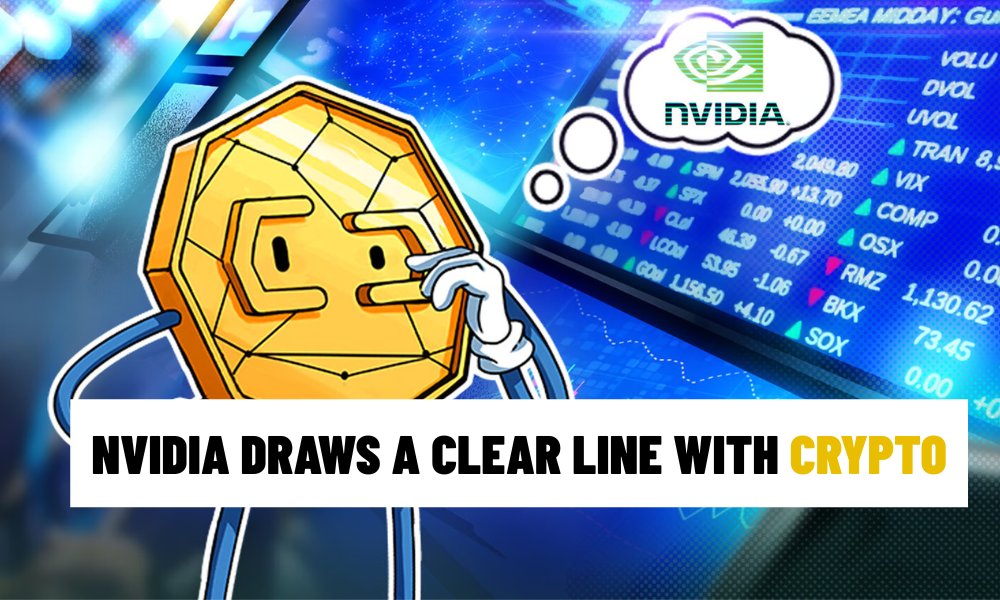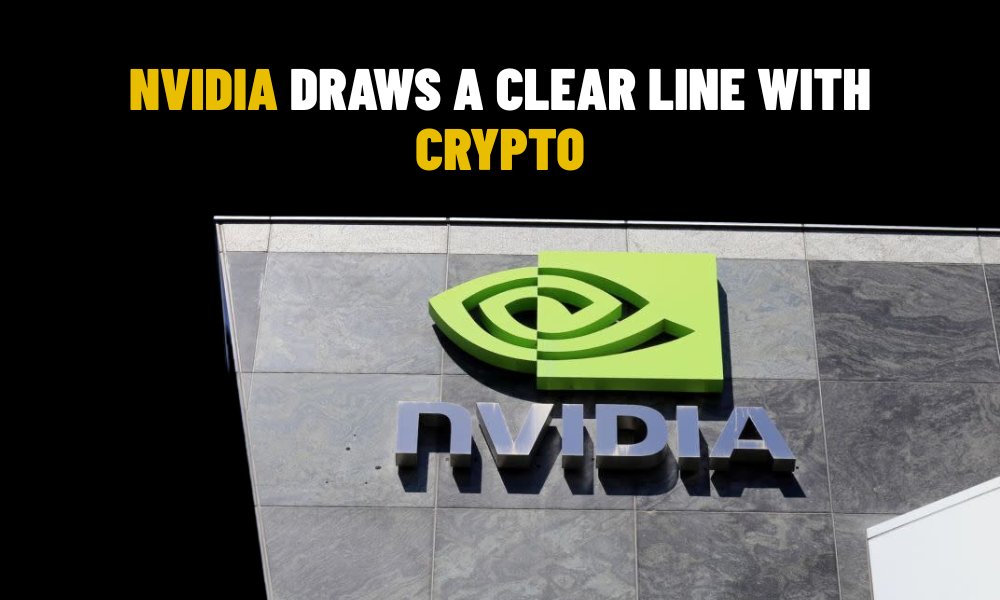On April 25, 2025, Nvidia sent shockwaves through the crypto community by abruptly canceling a highly anticipated partnership with Arbitrum, a leading Ethereum Layer 2 scaling solution. The decision, made just before the planned announcement, underscores Nvidia’s strategic pivot to prioritize artificial intelligence (AI) over blockchain and cryptocurrency initiatives. This move not only highlights Nvidia’s firm stance on digital assets but also raises questions about the intersection of AI and blockchain in the evolving tech landscape.
A Sudden Break with Arbitrum
The canceled partnership with Arbitrum was poised to be a cornerstone of Nvidia’s Ignition AI Accelerator program, which supports startups leveraging AI technologies. Arbitrum, known for its low-cost, high-speed transactions on Ethereum, had been in discussions to integrate its blockchain expertise into Nvidia’s ecosystem, potentially bridging AI and decentralized finance (DeFi). However, Nvidia pulled the plug at the last minute without providing a detailed explanation, leaving market participants and analysts speculating about the motives.
Posts on X reflect the crypto community’s surprise and disappointment, with some noting that Nvidia also removed crypto-related projects from its Inception program, further signaling a deliberate distancing from the sector. This abrupt shift has sparked debates about whether Nvidia views blockchain as a distraction from its core AI mission or is wary of regulatory and market risks associated with crypto.

Nvidia’s AI-Centric Vision
Nvidia’s decision aligns with its broader strategic focus on AI, a sector where it has established dominance through its powerful GPUs and software ecosystem. The company’s chips power cutting-edge AI applications, from generative models like ChatGPT to real-time translation and deepfake detection. Nvidia’s recent financial disclosures highlight its reliance on AI-driven data center revenue, with enterprises like Microsoft leveraging thousands of Nvidia A100 GPUs for large-scale AI training.
In contrast, Nvidia has consistently downplayed its involvement in cryptocurrency, even during the 2021 crypto mining boom when its GPUs were in high demand. The company’s leadership, led by CEO Jensen Huang, has emphasized AI as the “future of computing,” relegating blockchain to a secondary role. While Nvidia acknowledges the potential of blockchain in specific use cases, it appears reluctant to align closely with crypto projects, possibly to avoid regulatory scrutiny or market volatility.
Interestingly, Nvidia remains open to working with AI startups founded by individuals with crypto backgrounds, suggesting that its reservations are tied to the technology or market dynamics of cryptocurrencies rather than the people involved. This nuanced stance reflects Nvidia’s attempt to balance innovation with a clear prioritization of AI.
Market Implications and Token Performance
The cancellation of the Arbitrum partnership has not significantly dented the broader crypto market’s enthusiasm for AI-related tokens. Projects like ByteNova AI, which reportedly received Nvidia’s investment, continue to attract attention, with airdrop campaigns driving community engagement. Meanwhile, tokens associated with AI-blockchain integration, such as those in decentralized computing or data marketplaces, have seen resilient price action, buoyed by the growing convergence of these technologies.
However, Arbitrum’s native token, ARB, experienced a brief dip following the news, though it quickly recovered as traders focused on the platform’s strong fundamentals and expanding DeFi ecosystem. The incident underscores the crypto market’s sensitivity to high-profile partnerships and the potential for sentiment-driven volatility.
Regulatory and Geopolitical Context
Nvidia’s cautious approach to crypto may also be influenced by regulatory and geopolitical factors. The company has faced challenges navigating U.S. export controls on its AI chips, particularly to China, where smuggling networks have exploited loopholes to access Nvidia GPUs. These incidents, coupled with heightened scrutiny of crypto markets by global regulators, may have prompted Nvidia to steer clear of blockchain projects that could invite additional oversight.
In the U.S., the Securities and Exchange Commission (SEC) is actively shaping crypto regulations, with recent moves to clarify that stablecoins and certain tokens are not securities. While this creates a more permissive environment for blockchain innovation, Nvidia’s withdrawal from crypto partnerships suggests it prefers to avoid the regulatory gray areas still prevalent in the sector.

What’s Next for Nvidia and Crypto?
Nvidia’s decision to draw a “clear line” with cryptocurrency reflects a calculated bet on AI as its primary growth driver. By distancing itself from blockchain projects like Arbitrum, Nvidia is signaling that it sees limited strategic value in direct crypto engagement, at least for now. However, the company’s openness to AI startups with crypto roots indicates that it is not entirely closing the door on blockchain’s potential.
For the crypto market, Nvidia’s move is a reminder of the challenges in securing mainstream tech partnerships. While AI and blockchain are increasingly converging—evident in projects like decentralized AI training and tokenized data markets—crypto projects may need to demonstrate greater maturity and regulatory alignment to attract giants like Nvidia.
Looking ahead, several factors could shape Nvidia’s stance:
-
AI-Blockchain Synergies: If decentralized AI platforms gain traction, Nvidia may reconsider its approach, particularly if blockchain proves essential for secure, scalable AI data processing.
-
Regulatory Clarity: A more defined U.S. regulatory framework for crypto could reduce Nvidia’s hesitancy, encouraging selective collaborations with blockchain projects.
-
Market Demand: Growing demand for GPUs in crypto-adjacent applications, such as decentralized computing or NFT rendering, could prompt Nvidia to indirectly support the sector through tailored hardware or software solutions.
A Strategic Divide in Tech’s Future
Nvidia’s abrupt exit from its Arbitrum partnership and its broader retreat from crypto underscore a pivotal moment in the tech industry. While AI continues to dominate Nvidia’s vision, blockchain remains on the sidelines, viewed as a speculative and regulatory-laden space. For crypto investors and developers, this serves as both a challenge and an opportunity to prove the technology’s value beyond hype.
As the lines between AI and blockchain blur, Nvidia’s stance may evolve, but for now, the company has made its priorities clear: AI is the future, and crypto is not yet ready to share the spotlight. The market will be watching closely to see if this divide persists or if new bridges emerge to unite these transformative technologies.
